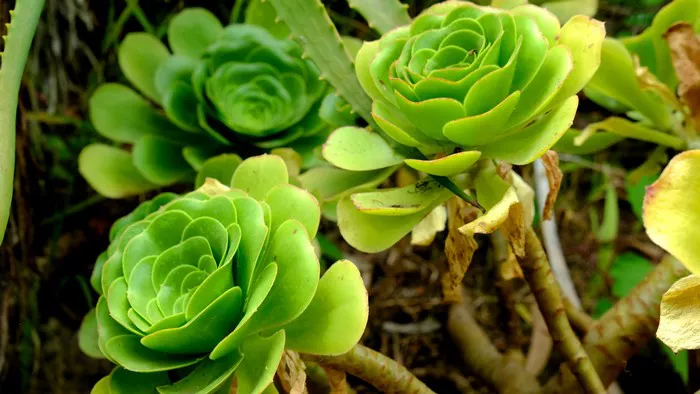Desert rose (Adenium obesum) is a striking succulent known for its vibrant flowers and distinctive swollen stem. Native to arid regions of Africa and the Arabian Peninsula, this plant has gained popularity worldwide for its ability to thrive in dry, hot climates and its beautiful blooms. Propagating desert rose succulents allows enthusiasts to expand their collection and share these exotic plants with others. In this comprehensive guide, we will explore various methods of propagation to help you successfully propagate and grow healthy desert rose succulents.
Understanding Desert Rose Succulents
Before delving into propagation techniques, it’s crucial to understand the basic biology and growth habits of desert rose succulents. Adenium obesum belongs to the Apocynaceae family and typically grows as a small tree or shrub. Its thick, fleshy stems and drought-tolerant nature make it well-suited for xeriscape gardens and indoor environments with ample sunlight.
Desert rose succulents are prized for their showy, trumpet-shaped flowers that can range in color from pink and red to white and purple. They bloom intermittently throughout the year, often in response to environmental cues such as temperature and light changes. Understanding these characteristics will guide us in choosing the best propagation methods to ensure successful reproduction.
Propagation Methods
1. Seed Propagation
Seed propagation is one of the primary methods for reproducing desert rose succulents. While it requires patience due to the relatively slow growth of seeds compared to other methods, it allows for genetic diversity and the potential to develop new varieties. Here’s how to propagate desert rose succulents from seeds:
Seed Collection: Harvest seeds from mature desert rose plants after the pods have dried and split open naturally. Collect seeds carefully to avoid damaging them.
Seed Preparation: Clean seeds by removing any remaining pod debris and soak them in water overnight to soften their outer coating, which can aid in germination.
Sowing Seeds: Plant seeds in a well-draining potting mix, lightly covering them with a thin layer of soil. Keep the soil consistently moist but not waterlogged to encourage germination.
Germination and Care: Place the pot in a warm, bright location with indirect sunlight. Germination may take several weeks to months. Once seedlings emerge, gradually acclimate them to direct sunlight and maintain regular watering to establish strong roots.
Seed propagation allows you to propagate multiple plants simultaneously, making it an ideal method for growers looking to expand their desert rose collection or experiment with breeding new varieties.
2. Stem Cuttings
Stem cuttings are a popular and efficient method for propagating desert rose succulents, offering quicker results compared to seeds. This method involves taking a portion of a healthy stem and encouraging it to develop roots. Here’s how to propagate desert rose succulents from stem cuttings:
Selecting Cuttings: Choose a healthy stem with no signs of disease or damage. Use a sharp, sterilized knife to cut a section of the stem that is approximately 4-6 inches long. Ensure the cutting includes at least one or two leaf nodes.
Preparing Cuttings: Allow the cuttings to callus over for a few days in a dry, shaded area. This helps prevent rotting when the cutting is planted.
Rooting Hormone (Optional): Dip the cut end of the stem in a rooting hormone powder to encourage faster root development, although desert rose cuttings can often root successfully without it.
Planting Cuttings: Insert the cut end of the stem into a well-draining potting mix, burying at least one leaf node beneath the soil. Water lightly to settle the soil around the cutting.
Rooting and Care: Place the pot in a warm, bright location with indirect sunlight. Keep the soil lightly moist until roots develop, typically within a few weeks. Once roots are established, gradually acclimate the new plant to direct sunlight and adjust watering to mimic the conditions of mature desert rose plants.
Stem cuttings are a reliable method for propagating desert rose succulents, offering a higher success rate than seeds and allowing growers to replicate desirable characteristics of parent plants.
SEE ALSO: Succulent Care in Summer: How Often to Watering
3. Grafting Techniques
Grafting is an advanced propagation method that involves joining a stem or bud (scion) from a desired desert rose cultivar onto the rootstock of a different desert rose plant. This technique is used to propagate specific varieties, enhance growth vigor, or overcome rootstock compatibility issues. Here’s how to graft desert rose succulents:
Selecting Scion and Rootstock: Choose a healthy scion from a desired desert rose cultivar and a compatible rootstock plant. Ensure both plants are healthy and free from pests or diseases.
Preparing Plants: Sterilize tools and make clean, angled cuts on both the scion and rootstock. Match the diameter of the cuts to ensure a snug fit when joining the two plants together.
Joining Plants: Gently press the cut surfaces of the scion and rootstock together, ensuring cambium layers align. Secure with grafting tape or a grafting clip to hold the union in place.
Aftercare: Place the grafted plant in a warm, humid environment with indirect sunlight. Monitor for signs of successful grafting, such as new growth from the scion. Gradually expose the plant to normal growing conditions once graft union is established.
Grafting allows growers to propagate specific desert rose varieties with consistent characteristics and can be a rewarding challenge for experienced succulent enthusiasts.
Conclusion
Propagating desert rose succulents offers growers an opportunity to expand their collections, preserve rare varieties, and share these stunning plants with others. Whether you choose to propagate from seeds, stem cuttings, or explore grafting techniques, understanding the biology and growth habits of desert rose succulents is essential for success.
By following the methods outlined in this guide and adapting techniques to suit your growing environment, you can propagate healthy desert rose succulents and enjoy their beauty for years to come. Experiment with different propagation methods, keep detailed records of your successes, and connect with fellow enthusiasts to further enhance your knowledge and appreciation of Adenium obesum.


